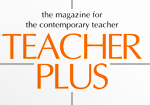Sanjhee Gianchandani
The one size fits all methodology although still the most popular, is widely accepted as not the best way to teach. Differentiated learning that suits individual learners and learning styles has to be incorporated in our classrooms and the first step towards that is getting to know our students better.
Category: Classroom Management
‘Blending’ learning
Bindu Subramaniam
Today we are still in the midst of a global pandemic but we are also ready to slowly start living our lives. Schools across the country have slowly started to reopen, testing the waters. But we are not yet ready to return to the pre-COVID times. In this situation blended learning is the best way forward.
Taking care of children with special needs in an inclusive classroom
V A Jyothi
Inclusive classrooms are a tough challenge even for the best teachers. But by following a few of these suggestions, you can make it a little less difficult to handle such classes.
Mad about this lesson plan?
Nabanita Deshmukh
Uncontrolled anger is fast turning into a real problem even in our classrooms. The teacher is angry and the students are shouting and fighting. We all need to learn how to control and manage our anger. And here’s an angry lesson plan to help you with that.
Mindfulness in a noisy class
Sahana Srinath
Mindfulness is a state of being; of being in the present without any thoughts/feelings about the past or the future. It is about focussing attention in the present and being aware of one’s current thoughts, feelings and state of mind and body.
Creating happy classrooms
Payal Khanna
Happy classrooms help children take ownership of their learning. A pendulum shift occurs when children feel happy. Happy children are more likely to be naturally engaged than children who are unsure of their presence in the class. So, how can teachers create happy classrooms? The idea is to give children the choice of taking charge of their own learning and this would mean teachers may need to be invested beyond their duty as educators.
Why math matters
Sweety Rastogi
Once upon a time, the teacher would come to class, read from the book, fill up the board and leave. There was no talking between the teacher and the students. Today, children are encouraged to ask questions and actively participate in the learning process. A teacher, therefore, should not only be an expert in her subject, but should also know how to present herself and handle challenging questions from the students.
The significance of classroom communication
Payal Bedi
Being able to express ourselves and be understood is a basic human necessity. It gains supreme significance in the classroom, as communication—between the teacher and the student, between students— is at the very core of learning. So how do you cultivate a communication culture in your classroom? How do you create a learning environment that will help students achieve their best?
The importance of classroom dynamics
Leena Satuluri
A teacher is extremely important to converting a classroom into a productive learning space. How she manages her class, keeps her own spirits up and guides her students on their learning journey plays a vital role in successful classroom transactions. An experienced teacher shares the lessons she has learnt over the years on effective classroom management.
Addressing individual differences
Archana Dwivedi
No two children are ever the same. Each child is unique. In a class of 40 children, how then do we treat them all alike? Here are simple suggestions you can employ in your classroom to handle the many different personalities of your students while maintaining a positive learning atmosphere.
